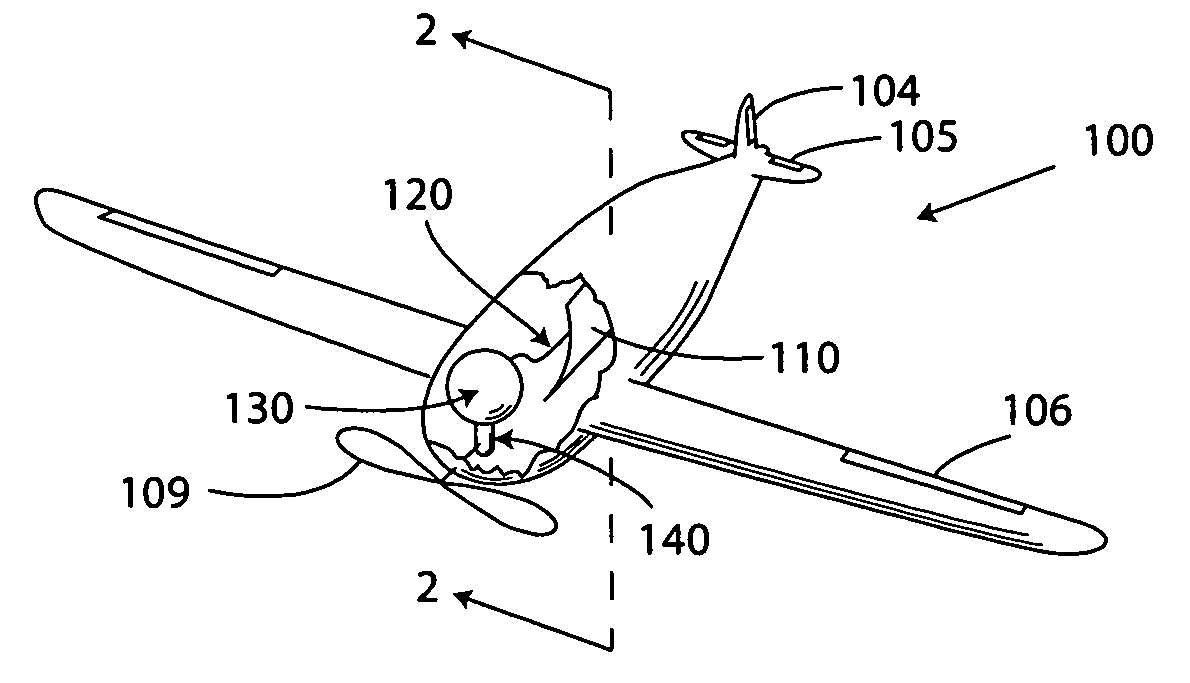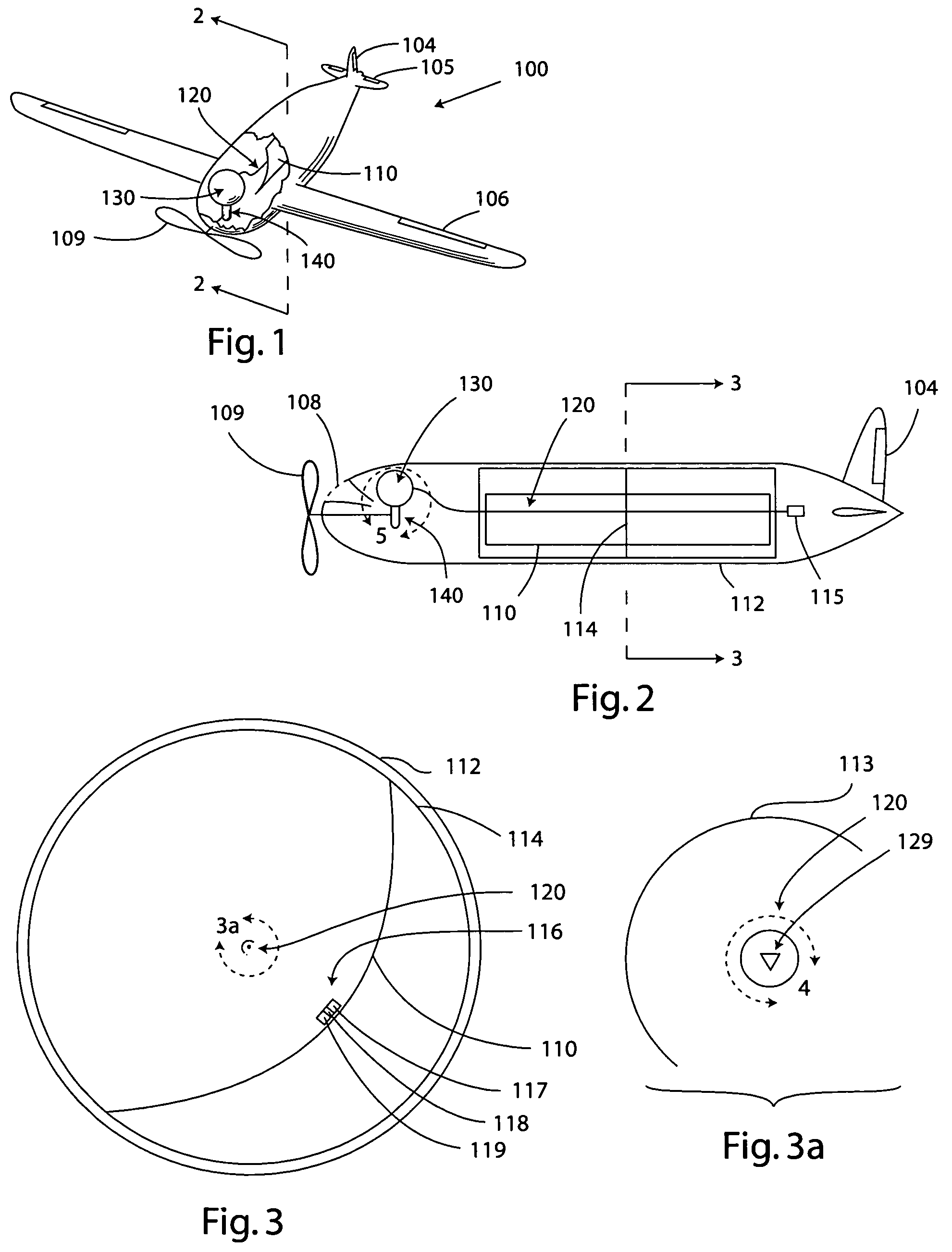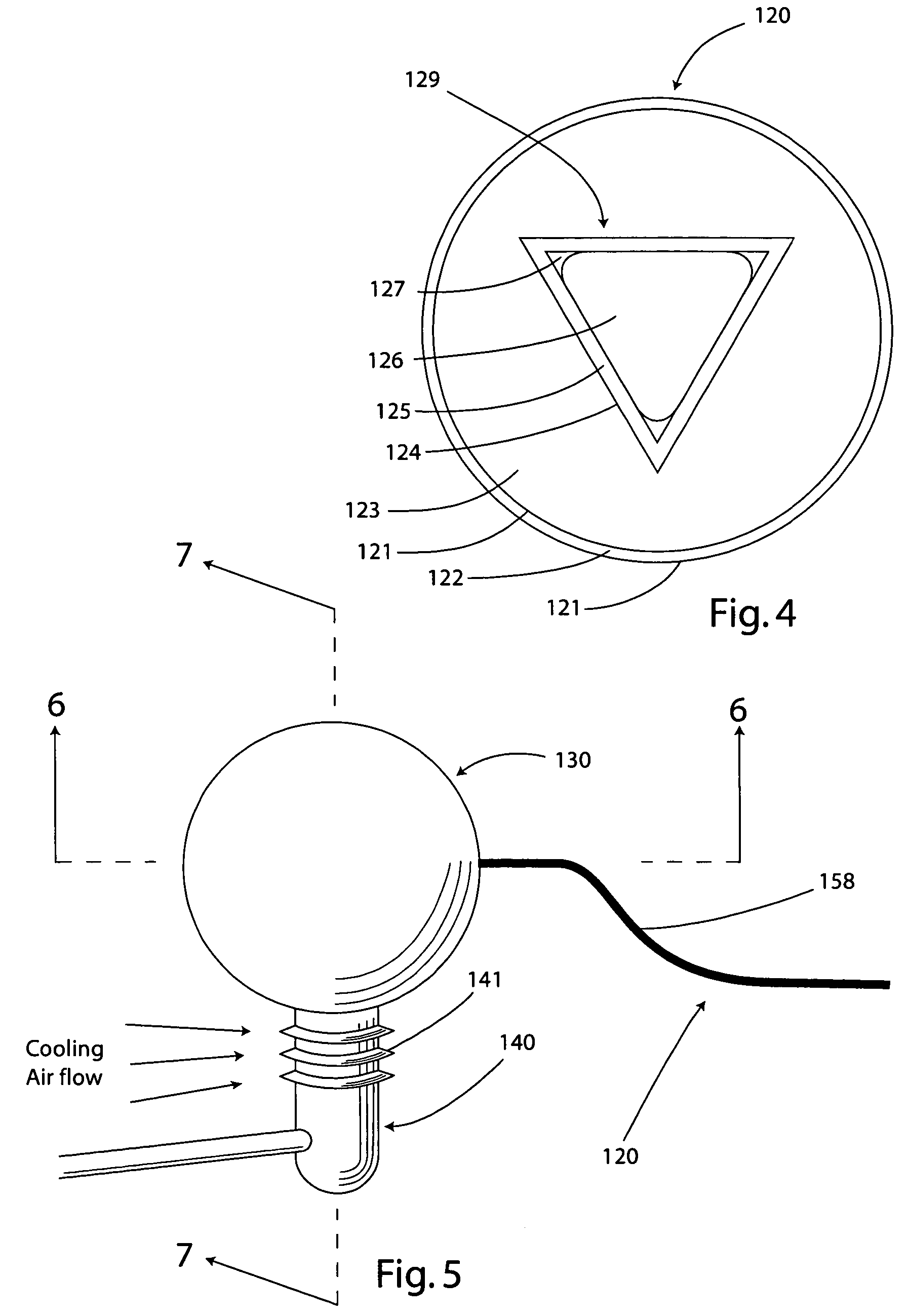Solar thermal aircraft
a technology of solar energy and solar energy, applied in the field of solar energy-generating aircraft and energy generation systems, can solve the problems of reducing the efficiency of solar power collection, and regenerative fuel cell systems imposing a substantial weight burden on all aircraft, etc., and achieves a high efficiency and power-to-mass ratio
- Summary
- Abstract
- Description
- Claims
- Application Information
AI Technical Summary
Benefits of technology
Problems solved by technology
Method used
Image
Examples
Embodiment Construction
[0048]Reference numerals used in the following description are listed in Table 1.
[0049]
TABLE 1100Solar thermal powered aircraft102Wing103Fuselage104Rudder105Elevator106Aileron107Transmission108Cooling air inlet channel109Propeller110Concentrator mirror111Ruddervator112Transparent fuselage skin113Back-reflector114Solar concentrator support115Solar concentrator drive motor116Heliostat117Heliostat Photovoltaic A118Heliostat Photovoltaic B119Heliostat Photovoltaic C120Heat collector121Antireflection coating122Heat collector envelope123Evacuated space124Heat collector coating125Stainless steel shell126Vapor phase sodium127Liquid phase sodium128Sodium condenser129Heat pipe130Thermal battery131Highly reflective vacuum shell132MLI (Multi-layer insulation) layers of highlyreflective material133LiH containment shell structure134Hydrogen & other dissociation products ofLiH135Spacers between MLI layers136Lithium hydride and lithium137Lithium impervious alloy139Gold layer140Heat engine141Cooling...
PUM
 Login to View More
Login to View More Abstract
Description
Claims
Application Information
 Login to View More
Login to View More - R&D
- Intellectual Property
- Life Sciences
- Materials
- Tech Scout
- Unparalleled Data Quality
- Higher Quality Content
- 60% Fewer Hallucinations
Browse by: Latest US Patents, China's latest patents, Technical Efficacy Thesaurus, Application Domain, Technology Topic, Popular Technical Reports.
© 2025 PatSnap. All rights reserved.Legal|Privacy policy|Modern Slavery Act Transparency Statement|Sitemap|About US| Contact US: help@patsnap.com



